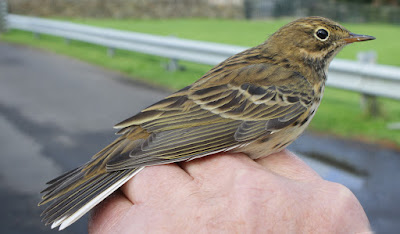The long predicted Thomas Cook debacle finally arrived on 23 September and left Sue and I with a puzzle as to how we might get home near to our original date of 2 October.
The Lovely Anna drove us to Skiathos airport to catch our promised rescue flight, but with a assurance that should there be further delays, we could return to The Ostria “no problem and no charge“. Such is the typical Skiathan outlook to life.
Our new flight was listed on the board but this time with Titan Airways; we arrived back in Manchester via Dubrovnik, ten minutes earlier than anticipated. We had been repatriated, with a tee shirt to prove it.
Repatriated
The not entirely unexpected turn of events surrounding Thomas Cook proved a slightly worrying time for visitors and locals alike. Happily, and unlike the UK, all tavernas, restaurants and cafes in Skiathos have free Wi-Fi whereby the Civil Aviation Authority web site showed regularly updated information for stranded passengers as they watched Skiathos life unfold.
The Bourtzi
Megali Aselinos
The Pegasus
The CAA web listed more than 50 worldwide destinations where over 180,000 Thomas Cook travellers were marooned, many of them in Greece and its islands where Thomas Cook had a long-established presence.
The crash meant that Skiathos alone had lost 2,000 or so visitors due to arrive during late September and early October. That had a knock-on effect to local business people who have to earn their income during the five month summer tourist season – taxis, shops, restaurants, tavernas, cafes, apartments and hotels. Not to mention the sundry businesses and hundreds of people who in turn provide services and employment. Not only did local businesses lose this income, hoteliers and apartment owners working with Thomas Cook lost arrears owed to them, in some cases, hundreds of thousands of Euros.
The Ostria Hotel at which we always stay is a case in point, a small, independent and family run business that lost a number of “arrivals” in the days following the crash and also repeat bookings for 2020 until alternative flights are found. The family decided to go independent following a similar crash of XL Airways in 2008 when their business received a large financial hit through XL paying suppliers in arrears, as is the practice of all large holiday companies.
For readers of Another Bird Blog I can wholeheartedly recommend a stay at The Hotel Ostria in Skiathos.
The owners, the Matinhou family of Mom Litsa, Dad Makis plus daughters Anna and Sophia are simply the most hospitable, kind, warm, sincere and generous people you could ever wish to meet. Their working motto seems to be “Arrive as a guest, leave as a friend”.
Makis
Anna
Sue and friend Litsa
Litsa
Dimitris and Angela
The peaceful and very beautiful Ostria is found along a 50 yard paved drive and at the start of the Platanos valley that leads into the pine-clad hills beyond. It is rural Greece with the sight and sounds of sheep, goats and free range turkeys but just 50 yards from Bus Stop 16 and the local bus to lively Skaithos Town.
The Ostria’s acres of spacious grounds of lawn, fruit trees, vines, palm trees and flowering plants are kept in manicured immaculate condition by tireless and friendly Ben. Angela and her look-alike sister keep the rooms and visitors’ areas spotlessly clean with a cheery wave to each and every guest.
The Ostria
The Ostria
The Ostria
Dimitris and Anouk look after every need during breakfast, daytime lounging or evening with a glass of Mythos, Ouzo or Metaxa.
The Ostria
A bonus of a stay at The Ostria is the bird life found in the gardens and the surrounding fields - Hooded Crows, Yellow Wagtails, Blackcaps, Red-backed Shrikes, Red-rumped Swallows and Spotted Flycatchers. There are Scops’ Owls, Little Owls and during the summer and at migration time, Bee Eaters.
There are a number of four and five star hotels in Skiathos but none receive the number of consistent complimentary, recommendations and reviews as the supposedly lower star rated Ostria. We would not dream of staying anywhere else on our next visit to Skiathos.
Wherever you are in the world, give The Ostria a try. You will not be disappointed. Here's a tip - don't fly Thomas Cook, but if on your travels you see him please remind him that he owes some good friends of mine large amounts of money.
Back soon with more Greek Delight.
Linking today with Anni's Blog and Eileen's Blogspot.
Red-backed Shrike
Spotted Flycatcher
Hooded Crow
There are a number of four and five star hotels in Skiathos but none receive the number of consistent complimentary, recommendations and reviews as the supposedly lower star rated Ostria. We would not dream of staying anywhere else on our next visit to Skiathos.
Loukoumi
Wherever you are in the world, give The Ostria a try. You will not be disappointed. Here's a tip - don't fly Thomas Cook, but if on your travels you see him please remind him that he owes some good friends of mine large amounts of money.
Back soon with more Greek Delight.
Linking today with Anni's Blog and Eileen's Blogspot.























































































